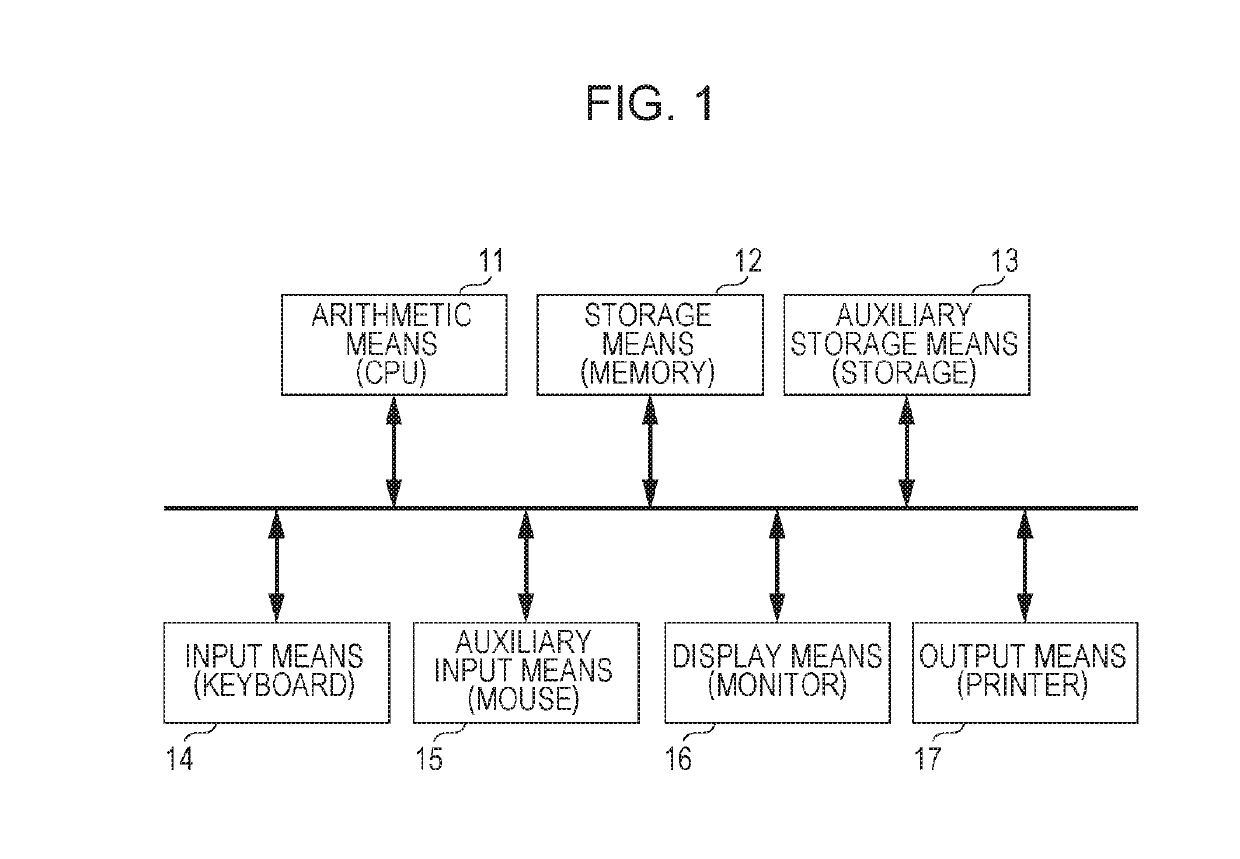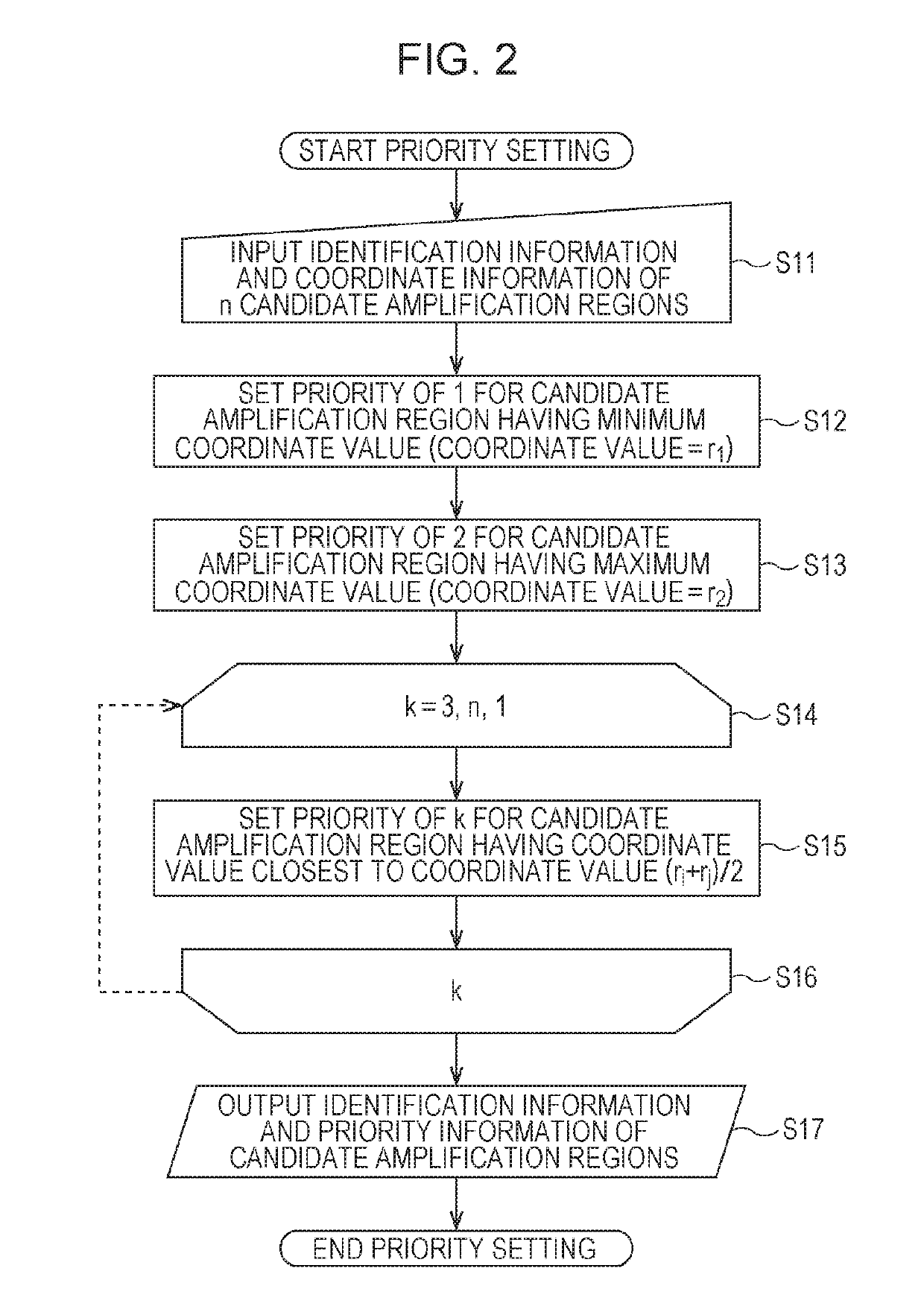Method for designing primers for multiplex PCR
- Summary
- Abstract
- Description
- Claims
- Application Information
AI Technical Summary
Benefits of technology
Problems solved by technology
Method used
Image
Examples
example 1
>
[0458]The candidate amplification regions X01 to X17 were assigned priorities in the following way.
[0459]In Table 8, the “priority” column indicates the priorities of the candidate amplification regions.
[0460]X01 (SNV coordinate: 20,763,642) having the minimum SNV coordinate was assigned a priority of 1.
[0461]X17 (SNV coordinate: 111,098,226) having the maximum SNV coordinate was assigned a priority of 2.
[0462]X12 (SNV coordinate: 67,800,935) closest to the midpoint of X01 and X17 (coordinate: 65,930,934) was assigned a priority of 3.
[0463]X09 (SNV coordinate: 46,946,157) closest to the midpoint of X01 and X12 (coordinate: 44,282,288.5) was assigned a priority of 4.
[0464]X13 (SNV coordinate: 95,858,978) closest to the midpoint of X12 and X17 (coordinate: 89,449,580.5) was assigned a priority of 5.
[0465]X11 (SNV coordinate: 53,608,479) closest to the midpoint of X09 and X12 (coordinate: 57,373,546) was assigned a priority of 6.
[0466]X16 (SNV coordinate: 103,397,937) closest to the m...
example 2
>
[0481]The candidate amplification regions X01 to X17 were assigned priorities in the following way.
[0482]In Table 8, the “priority” column indicates the priorities of the candidate amplification regions.
[0483]X01 (SNV coordinate: 20,763,642) was assigned a priority of 1.
[0484]X04 (SNV coordinate: 27,845,654) having a coordinate greater than or equal to 25,763,642, which was equal to the SNV coordinate of X01 plus 5,000,000, and having the smallest coordinate value among candidate amplification regions yet to be assigned priorities was assigned a priority of 2.
[0485]X05 (SNV coordinate: 36,385,031) having a coordinate greater than or equal to 32,845,654, which was equal to the SNV coordinate of X04 plus 5,000,000, and having the smallest coordinate value among candidate amplification regions yet to be assigned priorities was assigned a priority of 3.
[0486]X09 (SNV coordinate: 46,946,157) having a coordinate greater than or equal to 41,385,031, which was equal to the SNV coordinate o...
example 3
Effect of Example 3
[0520]With the use of cells derived from a pregnant woman (mother), which were obtained from the oral cavity of the pregnant woman (mother), and nucleated red blood cells derived from a fetus (child), which were obtained from the blood of the pregnant woman (mother), 60 SNP loci for which primers for multiplex PCR were successfully designed among the 99 SNP loci on chromosome 13 given in Tables 12 to 14 were subjected to genotyping to carry out a maternity test, and the precision was determined.
[0521]The mother-child relation was established both for the primers and primer sets designed in accordance with the method according to Comparative Example 2 and for the primers and primer sets designed in accordance with the method according to Example 3. The precision of the maternity test in Comparative Example 2 was about 13.2% with a large error and low accuracy, whereas the precision of the maternity test in Example 3 was about 4.5% with a small error and high accura...
PUM
| Property | Measurement | Unit |
|---|---|---|
| Angle | aaaaa | aaaaa |
Abstract
Description
Claims
Application Information
 Login to View More
Login to View More - R&D
- Intellectual Property
- Life Sciences
- Materials
- Tech Scout
- Unparalleled Data Quality
- Higher Quality Content
- 60% Fewer Hallucinations
Browse by: Latest US Patents, China's latest patents, Technical Efficacy Thesaurus, Application Domain, Technology Topic, Popular Technical Reports.
© 2025 PatSnap. All rights reserved.Legal|Privacy policy|Modern Slavery Act Transparency Statement|Sitemap|About US| Contact US: help@patsnap.com



